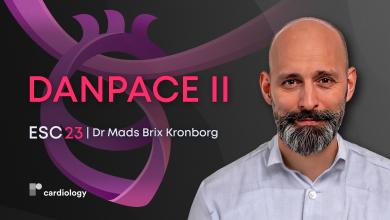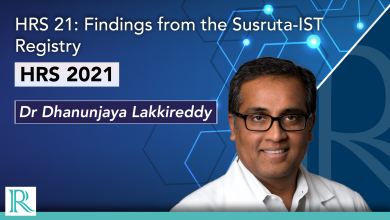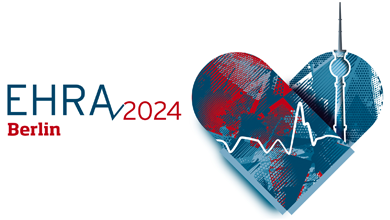Search results
Author(s):
Moinuddin Choudhury
,
Mark R Boyett
,
Gwilym M Morris
Added:
3 years ago
The sinoatrial or sinus node (SAN) is the heart’s natural pacemaker. Located in the superior right atrium, it automatically produces cyclical electrical activity to initiate each heartbeat in normal sinus rhythm. SAN dysfunction (SND) in humans, also known as ‘sick sinus syndrome’, can manifest as pathological bradycardia and asystolic pauses. As a result, SND can lead to symptoms of reduced…
View more
Author(s):
Mads Brix Kronborg
Added:
7 months ago
ESC 2023 — Dr Mads Brix Kronborg (Aarhus University Hospital, DE) joins us to discuss the findings from the DANPACE II Trial (NCT00236158).
DANPACE II (The DANPACE Investigator Group) trial aimed to compare patients who were randomised in a 1:1 ratio to either a base rate of 60 beats per minute and rate-adaptive DDD (DDDR-60 Group) or a base rate of 40bpm and non-rate adaptive DDD (DDD-40…
View more
Author(s):
Dhanunjaya Lakkireddy
Added:
2 years ago
In this interview, Dr Dhanunjaya Lakkireddy (Kansas City Heart Rhythm Institute, Overland Park, KS, US) discusses the outcomes of the multicenter Susruta-IST Registry, which aimed to report upon the outcomes of sinus node sparing surgical thoracoscopic hybrid ablation (SUSRUTA) for inappropriate sinus tachycardia (IST).
Questions:
1. Please summarise the aim, study design and endpoints?
2. What…
View more
Author(s):
Dario DiFrancesco
Added:
3 years ago
HCN4 (hyperpolarisation-activated, cyclic nucleotide gated 4) channels, the pore-forming α–subunits of ‘funny’ channels originally described in pacemaker cells of the sinoatrial node (SAN),1 are responsible for the early phase of diastolic depolarisation in these cells and are key determinants of pacemaker generation and control of heart rate.2–5 HCN4 channels are selectively expressed in the SAN…
View more
Author(s):
Mark E Josephson
Added:
3 years ago
In patients with syncope or episodes of palpitations and heart disease, an electrophysiology study (EPS) may be of value by means of potential induction of sustained ventricular tachyarrhythmias.1,2 Programmed ventricular stimulation may be useful in the context of risk stratification of ischaemic patients with left ventricular ejection fraction (LVEF) 30–40 %, and there has been some evidence…
View more
Author(s):
David Hamon
,
Jane Taleski
,
Marmar Vaseghi
,
et al
Added:
3 years ago
Orthotopic heart transplantation (OHT) is the most effective long-term therapy for end-stage heart disease, with implanted left ventricular assist devices (‘destination therapy’) as an alternative for selected patients. The denervation of the transplanted heart with complete loss of autonomic nervous system modulation, the use of immunosuppressant drugs, as well as the risk of allograft rejection…
View more
Added:
1 month ago
Source:
EHRA 2024
The European Heart Rhythm Association (EHRA) Congress has announced four late-breaking clinical trial sessions to be presented in April.EHRA 24 will take place in Berlin and online from the 7th to the 9th April 2024. Access the full programme here.Late-Breaking Science: ClinicalSunday 7th April, 13:45 – 14:45 Central European TimeArtificial intelligence-enabled single-lead ambulatory ECG can…
View more
Author(s):
Richard Sutton
Added:
3 years ago
Syncope in a patient with a pacemaker commands urgent action to ascertain its cause and provide appropriate treatment. This is a well accepted statement but the field has evolved in recent years and, strangely, has received little attention.
Many considerations bear on this issue. First, syncope in pacemaker patients is not common but may be more so than generally considered. The lack of…
View more
Author(s):
Demosthenes G Katritsis
Added:
3 years ago
Since the identification of the hyperpolarisation-activated cyclic nucleotide channel 4 (HNC4), a major constituent of the pacemaker current (If) in the sinoatrial node, as a modulator of heart rate,1 several genetic causes of sinus bradycardia by means of mutations in ion channel encoding genes have been described. They may result in isolated sick sinus sydrome or other arrhythmia and…
View more













